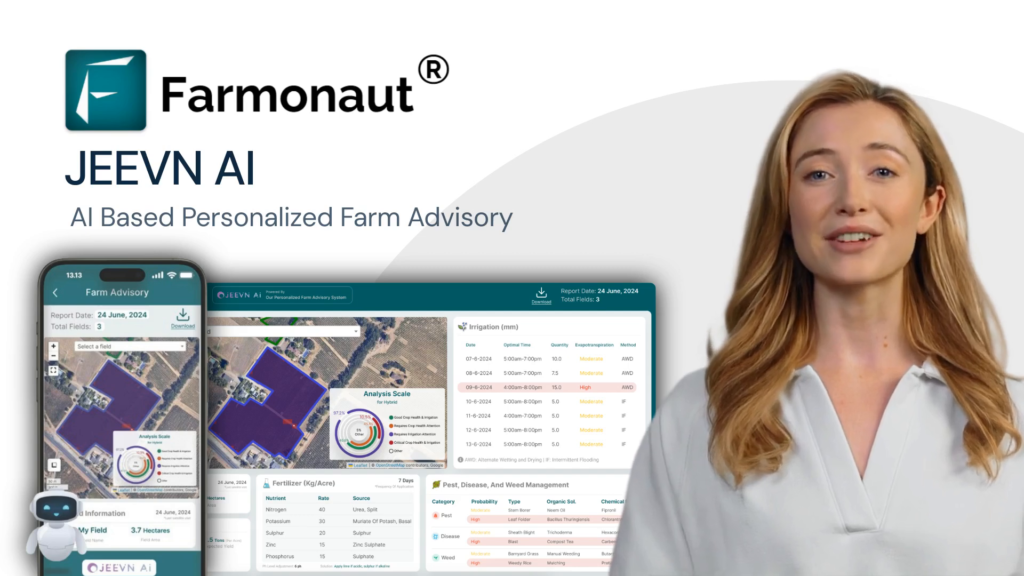Empowering Colorado’s Rural Communities: Navigating the Challenges of Electric Transmission Corridors

“The proposed Southwestern Grid Connector in Colorado could potentially span three rural counties, impacting local agricultural operations.”
In the vast expanse of southeastern Colorado, where the land runs deep and generations of farmers and ranchers have tended to their acres with unwavering dedication, a new challenge looms on the horizon. The proposed Southwestern Grid Connector, part of the National Interest Electric Transmission Corridors (NIETC) initiative, has sparked a heated debate over land use and rural development in this corner of the Centennial State. As we delve into this complex issue, we’ll explore the delicate balance between national energy needs and preserving rural ways of life, showcasing the intricate challenges in modernizing America’s power infrastructure.
Understanding the Southwestern Grid Connector
The Southwestern Grid Connector is a proposed electric transmission corridor that aims to enhance energy reliability and reduce costs across a significant portion of the western United States. This ambitious project, if realized, would stretch from New Mexico, through the western edge of Oklahoma’s panhandle, and into southeastern Colorado, potentially impacting three rural counties: Baca, Prowers, and Kiowa.
As part of the NIETC program, authorized by Congress in 2005, the U.S. Department of Energy has been tasked with identifying areas where transmission infrastructure is urgently needed to advance important national interests. The Southwestern Grid Connector represents one of three corridors currently under consideration, highlighting its significance in the broader context of America’s energy future.
The Promise of Enhanced Grid Connectivity
Proponents of the Southwestern Grid Connector argue that it’s a critical piece of infrastructure for several reasons:
- Increased Reliability: By connecting the eastern and western interconnections of the U.S. power grid, the corridor could significantly improve the reliability of electricity supply across vast regions.
- Cost Reduction: Enhanced transmission capabilities could lead to lower energy costs for consumers by allowing for more efficient distribution of electricity from areas of low-cost generation to high-demand regions.
- Support for Renewable Energy: The corridor could facilitate the integration of more renewable energy sources into the grid, supporting Colorado’s ambitious clean energy goals.
- Meeting Growing Demand: With electricity demand forecast to rise by nearly 16% by 2029, projects like this are seen as essential for meeting future energy needs.

The Concerns of Rural Communities
Despite these potential benefits, the proposal has met with significant resistance from the rural communities it would traverse. The concerns are multifaceted and deeply rooted in the region’s agricultural heritage:
- Eminent Domain: The specter of eminent domain looms large, with farmers and ranchers fearing the loss of land that has been in their families for generations.
- Agricultural Disruption: The construction and presence of transmission infrastructure could disrupt long-established farming and ranching operations.
- Property Values: There are concerns about the potential negative impact on property values in affected areas.
- Environmental Impact: The corridor could disturb the fragile short-grass prairie ecosystem that characterizes much of southeastern Colorado.
- Community Exclusion: Many local residents feel they have been left out of the decision-making process, with information about the project only recently reaching them.
“Colorado’s electric transmission corridor debate involves generations of ranchers and farmers, highlighting the clash between national energy needs and rural heritage.”
The Voice of the Land: Perspectives from Local Stakeholders
To truly understand the impact of the proposed Southwestern Grid Connector, we must listen to the voices of those most directly affected. Bob Bamber, a 44-year-old rancher whose family has worked the land for five generations, expresses a sentiment shared by many: “It’s an emotional reaction because of that family connection. It sounds cliche, but you are part of the land out here.”
Val Emick, another long-time resident and rancher, echoes this concern: “You go out seven days a week, and you build it and want to pass it down to your kids and your grandkids — it seems unfair. And they come in with that threat.”
These perspectives highlight the deep-rooted connection between the land and its stewards, a bond that transcends mere economic considerations.
The Economic Implications for Rural Counties
The potential economic impact of the Southwestern Grid Connector on rural counties is a significant point of contention. Prowers County Commissioner Ron Cook emphasizes the concern over eminent domain and its ripple effects on the local economy:
“Everything revolves around agriculture. If you’re going to take out that much land, it can affect the entire county,” Cook explains. “If there’s no alfalfa grown on that ground, that farmer doesn’t spend as much in town. That’s a big concern for us.”
This statement underscores the intricate economic ecosystem of rural communities, where agricultural productivity is intimately tied to the overall economic health of the region.
Balancing Act: Energy Needs vs. Rural Preservation
The debate surrounding the Southwestern Grid Connector exemplifies the broader challenge of balancing national energy needs with the preservation of rural ways of life. As we strive to modernize our power infrastructure and meet growing electricity demands, we must also consider the unique value and irreplaceable nature of rural communities and landscapes.
Mark Gabriel, president and CEO of United Power, offers insight into this dilemma: “The more transmission we build, the more flexibility and resilience we create. As coal goes away, we still need to move electrons. How do we meet a growing demand at the same time we’re closing down generator resources?”
This question lies at the heart of the challenge facing policymakers, energy experts, and rural communities alike.
The Role of Technology in Land Management and Energy Planning
As we grapple with these complex issues, innovative technologies are emerging that could help bridge the gap between energy needs and land preservation. Satellite-based farm management solutions, like those offered by Farmonaut, provide valuable tools for precision agriculture and land use optimization. While not directly addressing transmission corridor issues, these technologies can help farmers and ranchers maximize the productivity and sustainability of their operations, potentially mitigating some of the concerns associated with land use changes.
Farmonaut’s platform offers real-time crop health monitoring, AI-based advisory systems, and resource management tools that could prove invaluable for farmers navigating the challenges posed by infrastructure projects like the Southwestern Grid Connector. By providing data-driven insights into land use and productivity, such technologies can inform more nuanced discussions about the potential impacts of transmission corridors on agricultural operations.
Community Engagement and the Path Forward
One of the most significant criticisms of the NIETC process has been the perceived lack of community engagement. Prowers County Commissioner Ron Cook expresses frustration at the late notification about the project: “That is what we’re struggling with — we have no idea how this is going to end up and what they’re going to do with it.”
This sentiment underscores the critical need for more transparent and inclusive processes in infrastructure planning, especially when it comes to projects with such far-reaching implications for rural communities.
Comparative Analysis: Benefits and Concerns
| Aspect | Potential Benefits | Potential Concerns |
|---|---|---|
| Energy Reliability | Estimated 15-20% increase in grid stability | Uncertain local power supply improvements |
| Cost Reduction | Projected 5-10% decrease in energy costs for consumers | Potential economic losses for affected agricultural operations |
| Agricultural Operations | Possible integration of new technologies for precision farming | Disruption of up to 325,000 acres of farmland |
| Property Values | Potential increase in value for properties with improved power access | Estimated 10-15% decrease in property values near transmission lines |
| Environmental Impact | Support for renewable energy integration | Disturbance of sensitive short-grass prairie ecosystems |
| Community Involvement | Opportunities for public input in later stages of planning | Limited initial engagement with local stakeholders |
Legislative and Policy Considerations
The debate over the Southwestern Grid Connector has caught the attention of lawmakers at both the state and federal levels. U.S. Rep. Lauren Boebert has been vocal in her opposition to the project, pushing for extended public input periods and urging reconsideration of the corridor designation.
This political dimension adds another layer of complexity to the issue, highlighting the need for balanced policies that address both national energy security concerns and the rights and interests of rural communities.
Looking to the Future: Sustainable Solutions
As we navigate the challenges posed by the Southwestern Grid Connector and similar projects, it’s crucial to explore sustainable solutions that meet energy needs while respecting rural communities and landscapes. This may involve:
- Developing more flexible and less intrusive transmission technologies
- Exploring distributed energy resources and microgrids to reduce reliance on large-scale transmission projects
- Implementing comprehensive land use planning that integrates energy infrastructure with agricultural preservation
- Enhancing community engagement processes to ensure local voices are heard and respected
The Role of Advanced Agricultural Technologies
In addressing the challenges posed by electric transmission corridors, advanced agricultural technologies can play a crucial role. Platforms like Farmonaut offer innovative solutions that can help farmers and ranchers optimize their land use and productivity, potentially mitigating some of the impacts of infrastructure projects.
By leveraging satellite imagery and AI-driven insights, farmers can:
- Monitor crop health in real-time, allowing for more efficient resource allocation
- Implement precision agriculture techniques to maximize yield on available land
- Track and reduce carbon footprints, contributing to overall sustainability goals
- Utilize blockchain-based traceability to enhance the value and transparency of their products
While these technologies cannot directly solve the challenges of transmission corridor placement, they can empower farmers to adapt and thrive in changing landscapes.
Conclusion: A Call for Balanced Progress
The debate surrounding the Southwestern Grid Connector in Colorado serves as a microcosm of the broader challenges facing our nation as we strive to modernize our energy infrastructure while preserving the unique character and value of rural communities. As we move forward, it’s imperative that we foster open dialogue, prioritize community engagement, and seek innovative solutions that balance progress with preservation.
By leveraging advanced technologies, implementing thoughtful policies, and maintaining a deep respect for the land and its stewards, we can work towards a future where energy reliability and rural heritage coexist harmoniously. The path forward may be complex, but with collaboration, innovation, and a commitment to sustainability, we can empower Colorado’s rural communities while meeting the energy needs of the 21st century.
FAQs
- What is the Southwestern Grid Connector?
The Southwestern Grid Connector is a proposed electric transmission corridor that would run from New Mexico through Colorado, aiming to enhance energy reliability and reduce costs across the western United States. - How might the Southwestern Grid Connector affect rural communities in Colorado?
It could potentially impact agricultural operations, property values, and the local environment in southeastern Colorado counties like Baca, Prowers, and Kiowa. - What are the main concerns of local farmers and ranchers?
Key concerns include the potential use of eminent domain, disruption of agricultural operations, and the impact on land that has been in families for generations. - What are the potential benefits of the project?
Benefits could include increased energy reliability, lower energy costs, and support for renewable energy integration. - How can advanced agricultural technologies help in this situation?
Technologies like those offered by Farmonaut can help farmers optimize land use and productivity, potentially mitigating some impacts of infrastructure projects.
Earn With Farmonaut: Affiliate Program
Earn 20% recurring commission with Farmonaut’s affiliate program by sharing your promo code and helping farmers save 10%. Onboard 10 Elite farmers monthly to earn a minimum of $148,000 annually—start now and grow your income!
















